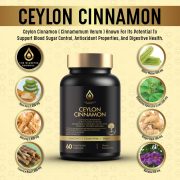The elephant ear is an ornamental plant that belongs to tropical and subtropical regions. It sprouts from a potato-like bulb and has big heart-shaped leaves. You can grow these plants indoors and outdoors. Keep in mind that these plants grow only in favorable conditions like moist soil, filtered sunlight, and adequate nutrients. To ensure maximum growth and the best health, it is critical to fertilize the elephant ear plant at the right time and in the right way.
Contents
- How & When to Fertilize Elephant Ears Plants?
- What Is The Best Time To Fertilize Elephant Ears?
- How To Fertilize Elephant Ears Indoors?
- Best Homemade Fertilizers For Elephant Ears
- Compost Tea
- Aquarium Or Fish Bowl Water
- Best Commercial Fertilizers
- 20-20-20 All-Purpose Liquid Fertilizer
- 20-10-20 Slow Release Mix
- Fertilization Tips
- FAQs
- What is the best fertilizer for elephant ear plants?
- Can you use Epsom salt on elephant ear plants?
- Conclusion
How & When to Fertilize Elephant Ears Plants?
Here is a guide answering:
What Is The Best Time To Fertilize Elephant Ears?
You should fertilize the elephant ears in spring, summer, and early fall season. You should stop fertilizing in the winters and autumn to give your plants a bit of rest. Since it is not a growing season, it is recommended to store the plants indoors and not fertilize them.
How To Fertilize Elephant Ears Indoors?
The varieties of Elephant Ear that grow well indoors include Cranberry Taro, Black Magic, Chicago Harlequin, and Black Stem. On average, these varieties grow for 3 to 5 feet which is a moderate size of indoor plants.
Elephant ear varieties attain a good size and require a lot of space to grow at their best potential, therefore; you should choose a fairly large container. It is recommended to choose a pot that is at least 30-inch wide and 20-inch deep. You can add 50% diluted liquid fertilizer every two weeks. However, if you don't dilute the fertilizer, it is recommended to use it every twenty days. Also, it is critical to follow a strict schedule to fertilize the Elephant Ear plants.
Best Homemade Fertilizers For Elephant Ears
Using homemade soil is much more beneficial and economical than a commercial one. Homemade fertilizers help maintain soil health since they are not harmful to soil structure and the soil's microbial community. Here are the few homemade or natural fertilizers you can use for elephant ear plants.
Compost Tea
Compost Tea is a homemade liquid fertilizer that gives stunning results if used in the spring and summer seasons. You can easily prepare this fertilizer at home using compost. It takes almost twenty days to prepare the tea from compost.
To make the compost tea, fill a burlap bag with compost and place it in the water. After twenty days, the water will turn yellowish to brown depending upon the concentration of compost. If the water turns brown, you should dilute it before applying it to the plants.
Aquarium Or Fish Bowl Water
It is another great idea to fertilize your elephant ear plants with fishbowl water. You can store the fishbowl water when you clean it and apply two cups of water per plant after every two weeks.
Best Commercial Fertilizers
Commercial fertilizers can make your plant grow rapidly with its full potential. However, you need to be very careful this time since a minor mistake can burn your plants. It is recommended to follow a strict schedule and use a specific quantity of fertilizer to get the best results.
20-20-20 All-Purpose Liquid Fertilizer
It is a premium all-purpose liquid fertilizer that you can apply every two weeks to the elephant ear plants. It is an all-purpose fertilizer that you can use at any stage of plant development.
20-10-20 Slow Release Mix
It is a water-soluble fertilizer rich in magnesium slats and retains maximum slats in the soil for a long time. Application of this fertilizer will benefit your plants in the winters when you don't fertilize your plants. You can use this fertilizer every three weeks for growing and once a month for fully grown plants.
Fertilization Tips
If you are using organic fertilizer, you should regularly add Epsom salt to maintain the soil's nutrient balance. Homemade and natural fertilizers are not that rich in salts to fulfill the elephant ear’s requirements. Also, it is recommended to use both natural and commercial fertilizer from time to time to maintain soil health and plant growth.
FAQs
What is the best fertilizer for elephant ear plants?
Can you use Epsom salt on elephant ear plants?
Conclusion
The Elephant Ear plant needs a lot of care and is highly sensitive to unexpected changes in temperature, moisture level, and nutrient levels. Therefore, you should regularly monitor the foliage health of plants and fertilize them accordingly.

